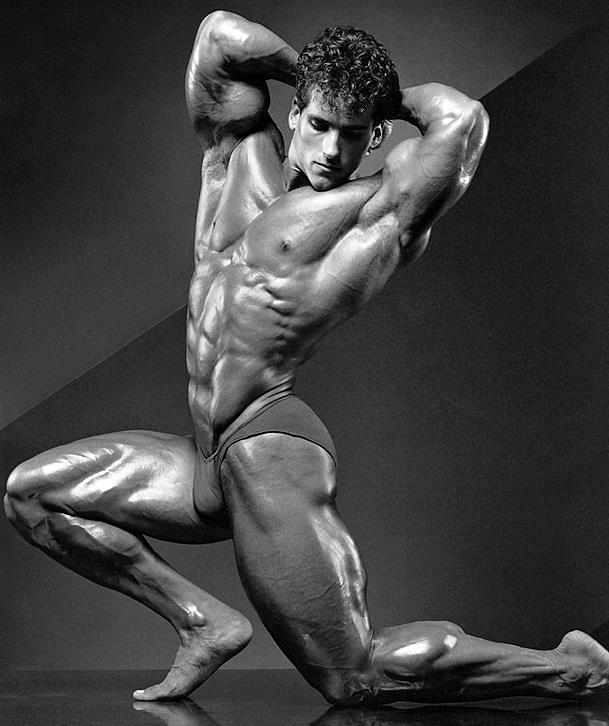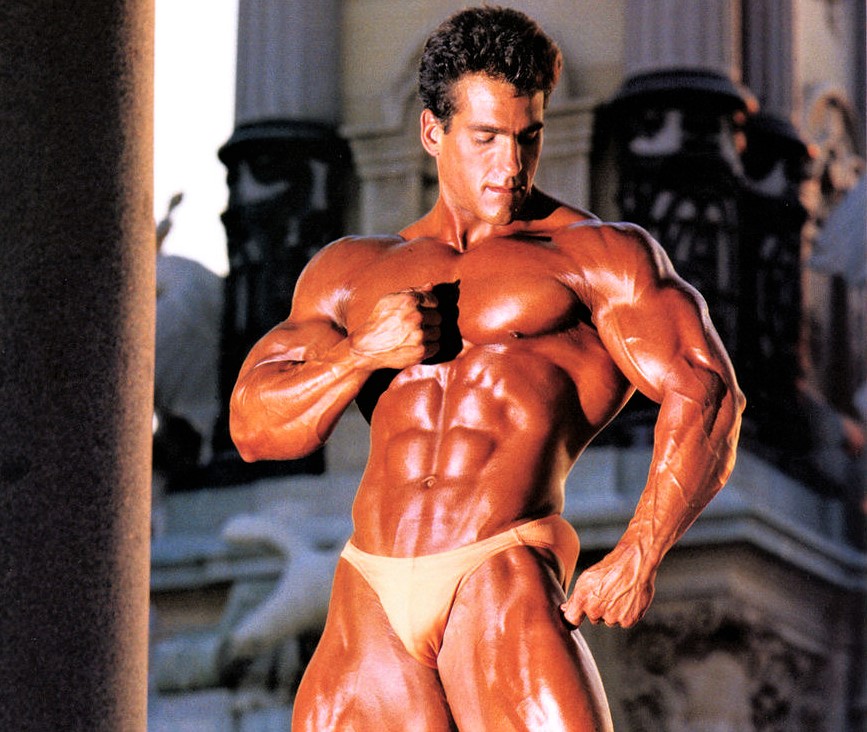Bob Paris had arguably the most aesthetic physique of all time. Like Steve Reeves in the 1950s, in the 1980s, Paris represented the apotheosis of classical lines and perfect proportions. And, yet unlike most shape-first bodybuilders (see three-time Mr. Olympia Frank Zane, for example), he was not undersized by the standards of the day—at least not at first. He burst onto the scene at only 22 in 1982, and then in 1983 he took the bodybuilding world by storm, winning the NPC Nationals and the IFBB World Championships, the top amateur American and world titles. He was only 23, and at 5’11″ he weighed 230 pounds on stage. Equally auspicious was his pro debut, seventh place in the 1984 Mr. Olympia at 24, ahead of former Olympia champs Sergio Oliva and Chris Dickerson.
Many heralded Bob Paris as a future Mr. Olympia. It wasn’t to be. Between 1984-92, Paris competed in 32 pro contests. He never placed higher than third, but he was third nine times. (Of Paris’ 32 pro contests, 21 of them occurred over an exhausting 18 months from the spring of 1988 to the fall of 1989.) Long before there was a classic physique division, Bob Paris’ flawless shape almost always kept him in the running, even as his refusal to push striations and size into the freaky zone prevented him from securing a pro title. Like a sculptor at work, muscle was added and cuts were revealed strategically.
Today, Bob Paris lives on one of the Gulf Islands of British Columbia, Canada. He is still celebrated for his phenomenal ’80s body and his steadfast commitment to physique aesthetics.
These are Bob Paris’ top 10 training tips.
FOCUS ON AESTHETICS.
“Have a broad goal of how you want your body to look. That should motivate everything you do in the gym. If you need to bring up one body part to be in balance with the others, give it extra attention. Work it first in your workout, and work it the hardest. If necessary, give it its own workout. When it comes to each bodypart, analyze what you need to improve, like upper chest, lower lats, more triceps than biceps, whatever it is. Then focus your workouts to accomplish those smaller goals in service of the broad goal. If you want an aesthetic body, a work of sculpture made of flesh, focus on aesthetics first and foremost.”
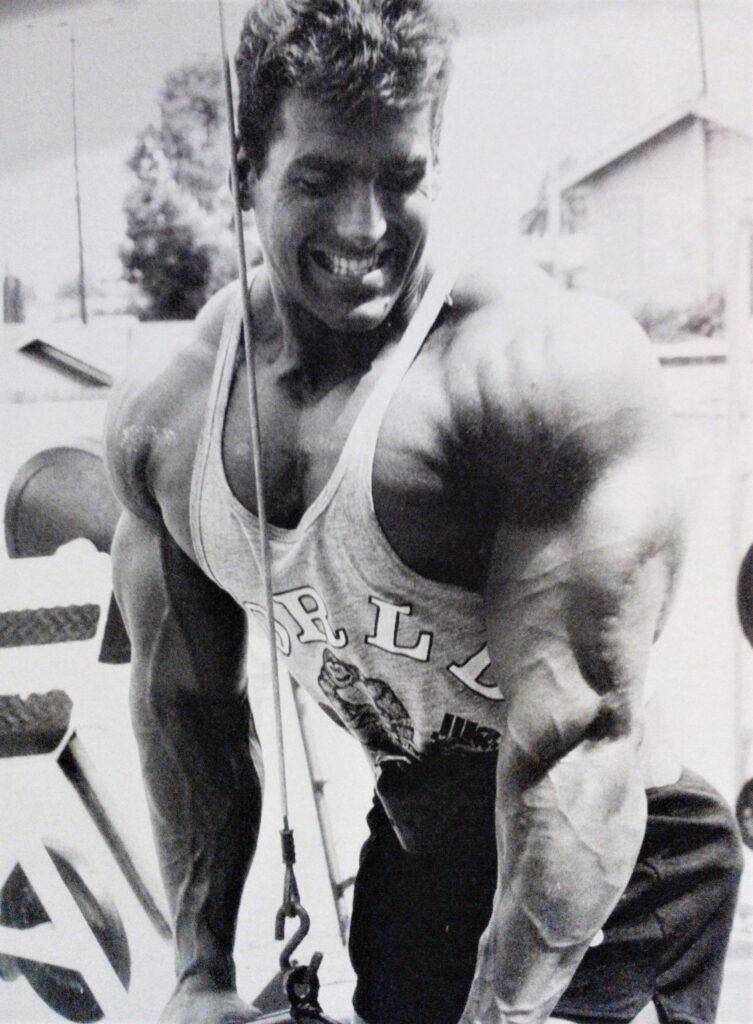
PRIORITIZE UPPER CHEST.
“What really makes pecs stand out is the upper region. If you have too much lower pecs and not enough upper pecs, your chest looks droopy. So I focus mostly on the upper part with incline presses and incline flyes, four sets of each and I do them first. Then I’ll end my chest routine with flat dumbbell presses and dumbbell pullovers for three sets each. So it’s mostly about the upper pecs, and I like to end with dumbbell pullovers for higher reps [15-20] to work my serratus and tie the pecs and lats together.”
FEEL EVERY AB REP.
“Don’t try to beat your abdominals into submission with 100-rep sets. As with all your muscles, feeling the contraction is most important. On the other hand, doing sets of 6-8 reps for ab training isn’t practical because of the anatomy involved. The reps are very short, so it’s all about maintaining tension. My goal is to feel each and every one of my reps. For that, 15-25 reps works best. My ab-training approach is relatively simple. There are only a couple of basic functions you need to address to develop the area, and everything spins off from there. I like crunches—lying, decline, and twisting—and leg raises—seated and hanging.”
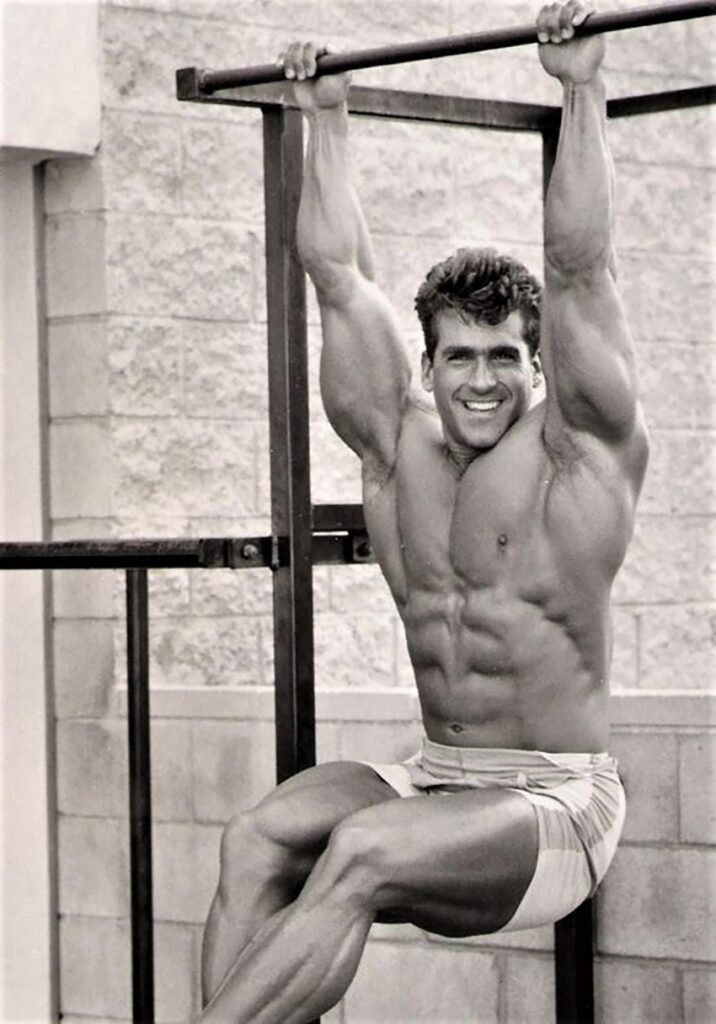
DO SIDE LATERALS FIRST.
“Shoulders are another body part that I approach strategically. I want to emphasize the middle delts for that wide-shouldered look. So, I do side laterals first, followed by rear laterals, and then I end with a barbell military press or dumbbell press. Most people start with the presses, but I always focus on the area I most want to emphasize the most by working it when my strength and energy are greatest.”
ALTER YOUR REP RANGE.
“I don’t have an ideal rep range. I’ll go as low as 6 and as high as 25. I tend to stick to the 10-12 range, but there will almost always be some reps in the 6-8 range on at least one exercise per workout, and there may be some reps in the 15-20 range on another exercise in the workout. The 20-25 range I keep for abs or calves. Changing up the reps keeps me motivated with different goals—more weight with lower reps or more reps with less weight—and it’s another way of varying the stress on my muscles.”
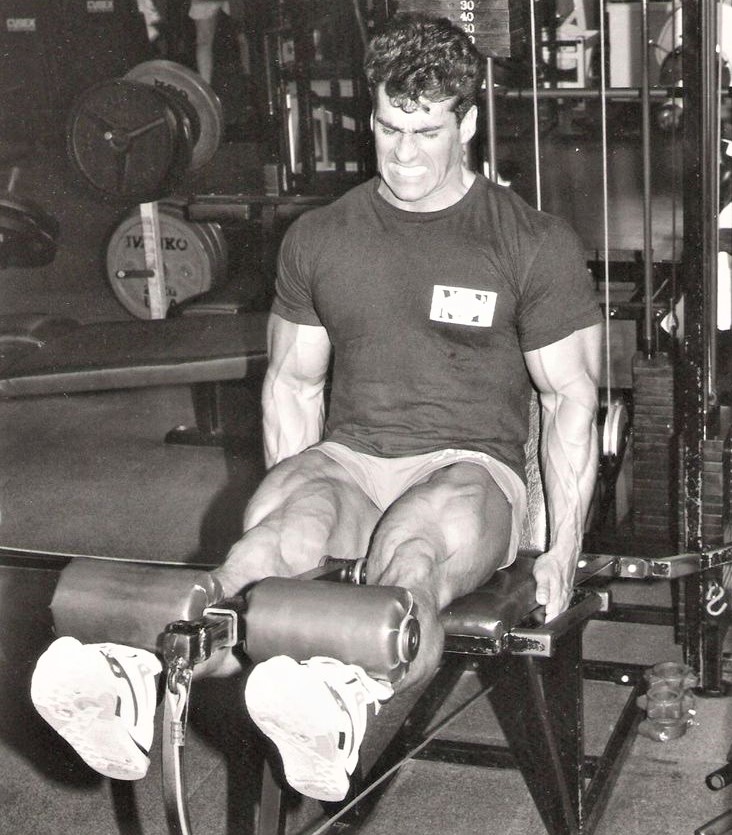
WORK FOREARMS.
“The key to having an aesthetic physique is working everything. I train forearms in every arm workout. I do barbell wrist curls, pulley wrist curls, and reverse curls with a pulley or barbell. I’ll pick one or two of those and do them at the end of an arm workout for four sets of 12-15. A wrist curl is a very short movement, so I like to use a bar attached to a pulley sometimes to keep the tension on the forearms during the top half of the movement.”
DO FRONT SQUATS.
“I like the front squat more than the back squat. I just feel it more in my quads and less in my glutes. Also, as a taller guy it’s easier to stay upright and squat with good form when I do front squats instead of back squats. When I do back squats, I like a block under my heels to help me stay upright.”
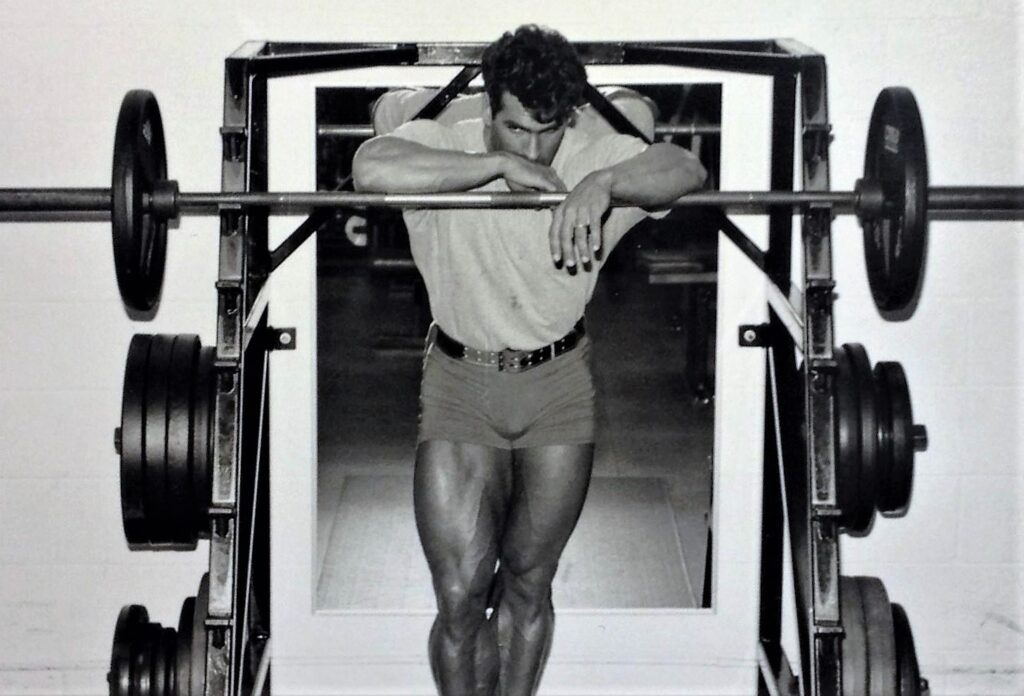
FILL OUT YOUR TRAPS.
“Some bodybuilders undertrain their traps because they feel big traps make their shoulders look narrower. You certainly don’t want to overdevelop your traps in relation to other muscles, but that’s true of any muscle. You want to keep everything in balance. But traps give you a complete look, so I train them hard with shrugs or rack deadlifts at the end of my back workout. You can work traps with shoulders if you prefer. But especially if you’re taller with wider clavicles you’re going to want to fill our your traps to get that strong, masculine look to your neck and shoulders.”
MAKE OFF-DAYS ACTIVE REST DAYS.
“It’s a rare day when I don’t do cardio. I generally do it every day for 20-30 minutes, stationary bike or stepmill, typically at the end of my workout. I even do it on my off-day, which I call an ‘active rest day.’ I prefer that to off-day. I don’t want to have a day when I’m off my goals, when I do nothing and eat junk. There’s no off for my goals. They’re always on. I’m still working towards my goals on my active rest days, still doing cardio, still eating right, and doing things like stretching and massage to aid workout recovery.”
ATTACK YOUR CALVES.
“Like forearms, calves are a bodypart I never neglect. I train them as hard as every other bodypart and twice weekly. I do three exercises every time: standing calf raises or calf presses for the gastrocnemius, seated calf raises for the soleus, and tibia raises for the front of my calves, 3-4 sets of each for either 12-15 reps or 20-25 reps. Some gyms have a tibia raise machine. If not, you can do tibia raises seated on a lying calf machine, facing backwards, with your toes under the ankle pad. Developing the tibia gives your calves some depth from the front, and it also protects against shin splints if you do any running.”
